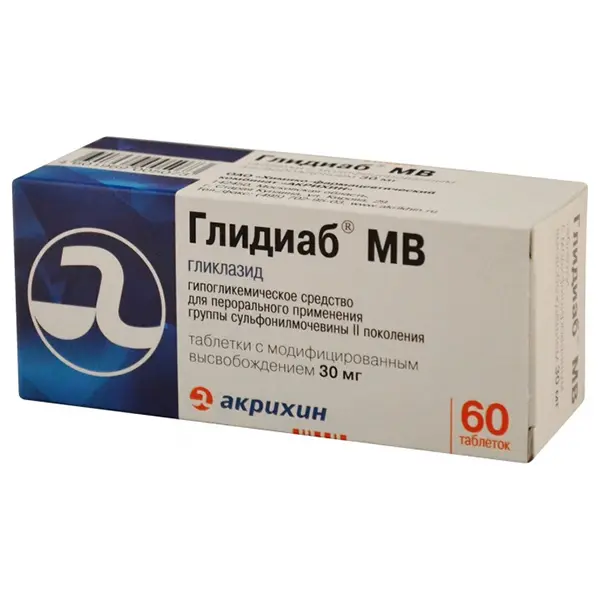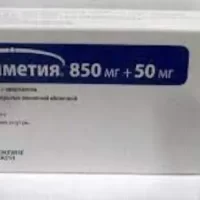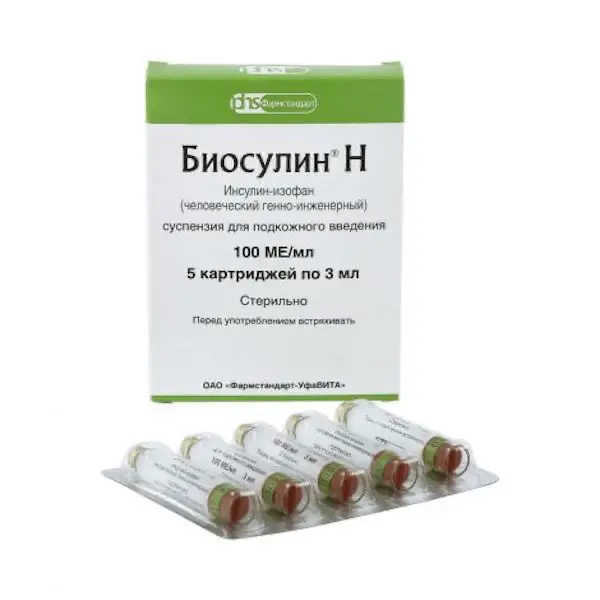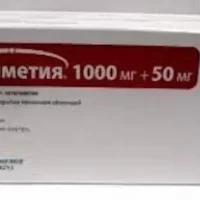Description
Glidyab MB Pharmacodynamics
Gliclazide is a sulfonylurea derivative, a hypoglycemic drug for oral administration, which differs from similar drugs by the presence of
N-containing heterocyclic ring with an endocyclic bond.
Gliclazide reduces blood glucose concentration by stimulating insulin secretion by ß-cells of Langerhans islets. Increased concentration of postprandial insulin and C-peptide persists after 2 years of therapy.
In addition to its effect on carbohydrate metabolism, gliclazide has hemovascular effects.
Effect on insulin secretion. In type 2 diabetes, gliclazide restores the early peak of insulin secretion in response to glucose intake and enhances the second phase of insulin secretion. A significant increase in insulin secretion is observed in response to stimulation caused by food intake or glucose administration.
Hemovascular effects. Gliclazide reduces the risk of small vessel thrombosis by affecting the mechanisms that may contribute to the development of complications in diabetes: partial inhibition of platelet aggregation and adhesion and reduction
concentration of platelet activation factors (beta-thromboglobulin, thromboxane B2), as well as to restore the fibrinolytic activity of the vascular endothelium and increase the activity of tissue plasminogen activator.
Intensive glycemic control based on the use of gliclazide with modified release (target glycosylated hemoglobin (HbA1c) < 6.5%) significantly reduces the risk of micro- and macrovascular complications of type 2 diabetes compared with standard glycemic control.
Indications
Diabetes mellitus type 2 with insufficient effectiveness of diet therapy, physical activity and body weight reduction.
Prevention of diabetes complications: reduction of risk of microvascular (nephropathy, retinopathy) and macrovascular complications (myocardial infarction, stroke) in patients with type 2 diabetes by intensive glycemic control.
Contraindications
● Hypersensitivity to gliclazide or any of the excipients of the drug, other sulfonylurea derivatives, sulfonamides;
● Type 1 diabetes mellitus;
Diabetic ketoacidosis, diabetic precoma, diabetic coma;
severe renal or hepatic insufficiency;
● intake of miconazole;
● Pregnancy and breastfeeding;
● age under 18 years.
It is not recommended to use the drug simultaneously in combination with phenylbutazone or danazol.
Caution
Elderly age, irregular and/or unbalanced diet, severe cardiovascular diseases (including CHD, atherosclerosis), hypothyroidism, adrenal or pituitary insufficiency, hypopituitarism, renal and/or hepatic insufficiency, long-term treatment with glucocorticosteroids (GCS), alcoholism, glucose-6-phosphate dehydrogenase deficiency.
Administration during pregnancy and lactation
Pregnancy. There is no experience in the use of gliclazide during pregnancy. Data on the use of other sulfonylurea derivatives during pregnancy are limited.
Teratogenic effects of gliclazide have not been identified in studies on laboratory animals. Oral hypoglycemic drugs are not used during pregnancy. The drug of choice for the therapy of diabetes mellitus in pregnant women is insulin.
It is recommended to replace gliclazide with insulin therapy both in case of a planned pregnancy, and if pregnancy occurs against the background of taking the drug.
Breast-feeding period. Taking into account the lack of data on the penetration of gliclazide into breast milk and the risk of neonatal hypoglycemia, breastfeeding is contraindicated during therapy with the drug.
Dosage and administration
- The drug is intended for use in adults only.
The recommended dose of the drug should be taken orally, once a day, preferably during breakfast. It is recommended to swallow the tablet whole, without chewing and crushing. - If one or more doses of the drug are missed, the higher dose should not be taken at the next dose, the missed dose should be taken the next day. As with other hypoglycemic drugs, the drug dose
in each case should be adjusted individually, depending on blood glucose concentration and glycosylated hemoglobin (HbA1c). - Initial dose. Initial recommended dose in adults (including elderly persons ≥ 65 years) is 30 mg (1 tablet) per day.
- In case of adequate control, the drug in this dose may be used for maintenance therapy.
- In case of inadequate glycemic control, daily dose of this medicine may be sequentially increased to 60 mg, 90 mg or 120 mg. Increasing of
The dose may be increased not earlier than after 1 month of therapy with the drug in the previously prescribed dose. Exceptions are patients
patients whose blood glucose concentration has not decreased after 2 weeks of therapy are an exception. In such cases, the drug dose may be increased after 2 weeks of therapy. - Maintenance therapy. The maintenance daily dose is from 30 to 120 mg. The maximum recommended daily dose of the drug is 120 mg.
- Transition from Glidib® tablets 80 mg to Glidib® MB, sustained release tablets 30 mg
1 tablet of Glidiab® 80 mg can be changed to 1 tablet with modified release of 30 mg of Glidiab® MB. When transferring patients from Glidiab® , 80 mg tablets to Glidiab® MB, careful glycemic control is recommended. - Transition from another hypoglycemic drug to Glidiab® MB, 30 mg modified-release tablets
Glidyab® MB, 30 mg modified-release tablets, may be used instead of another oral hypoglycemic drug. When transferring to Glidyab® MB of patients receiving other oral hypoglycemic drugs, their dose and elimination half-life should be taken into account. As a rule, a transitional period is not required. The initial dose of Glidib® MV
should be 30 mg and then should be titrated depending on blood glucose concentration. - When transferring a patient from therapy with hypoglycemic drugs with a long half-life, it may be necessary to temporarily (for several days) discontinue treatment to avoid additive effects,
increasing the risk of hypoglycemia. The initial dose of Glidib® MB in this case is also 30 mg and, if necessary, can be further increased as described above. - Combined administration with other hypoglycemic drug
Glidyab® MB may be used in combination with biguanidines, alpha-glucosidase inhibitors or insulin. In case of inadequate glycemic control, additional insulin therapy should be prescribed with careful
medical monitoring.





